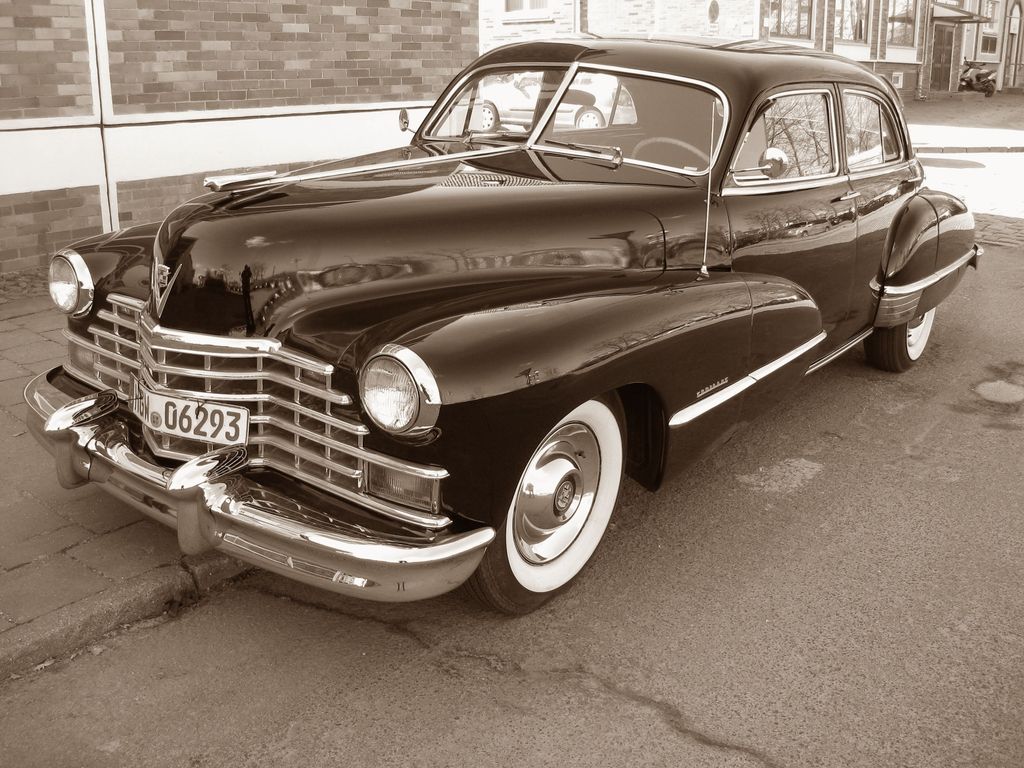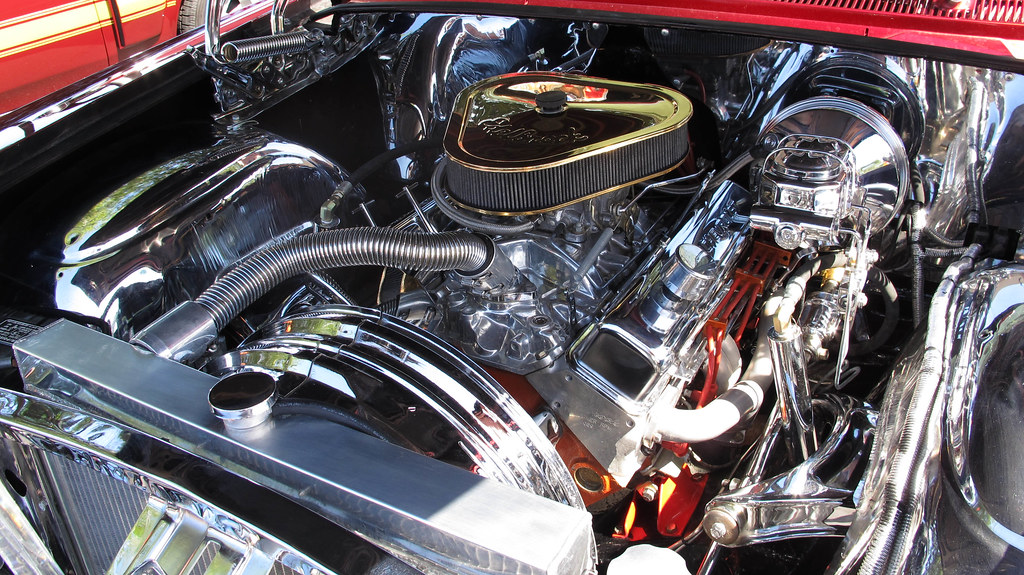
The 1990s stand as a truly golden era for car enthusiasts, a decade where technological innovation, raw driving thrills, and distinctive designs converged to create a vibrant automotive landscape. While legendary models like the Nissan Skyline GT-R, Toyota Supra, and McLaren F1 rightfully claimed their places in the pantheon of automotive greatness, their brilliance often cast long shadows, obscuring a quieter fleet of machines that offered just as much driving satisfaction without the accompanying auction frenzy or pervasive car meet hype.
Indeed, some truly remarkable vehicles from this period slipped under the radar, becoming what we affectionately call “underrated.” This wasn’t always due to a lack of intrinsic value or engineering prowess; often, it was a confluence of factors—perhaps a poorly timed launch, polarizing aesthetics that didn’t immediately click with the public, or simply being overshadowed by flashier, more heavily marketed rivals. These cars, however, represent a fascinating counter-narrative to the well-trodden paths of collector car appreciation, embodying a spirit of innovation and driving purity that still resonates today.
In this extensive exploration, we embark on a journey to bring the spotlight back onto 16 such foreign classic cars of the 1990s. We’re talking about the machines that dared to be different, the ones that offered genuine engineering brilliance, innovative design, and often, a visceral driving experience that belied their relative anonymity. Prepare to rediscover the unsung heroes of a bygone automotive era, each a testament to a time when mechanical excellence often took precedence over mere specifications, and a unique character was a hallmark of true automotive artistry.
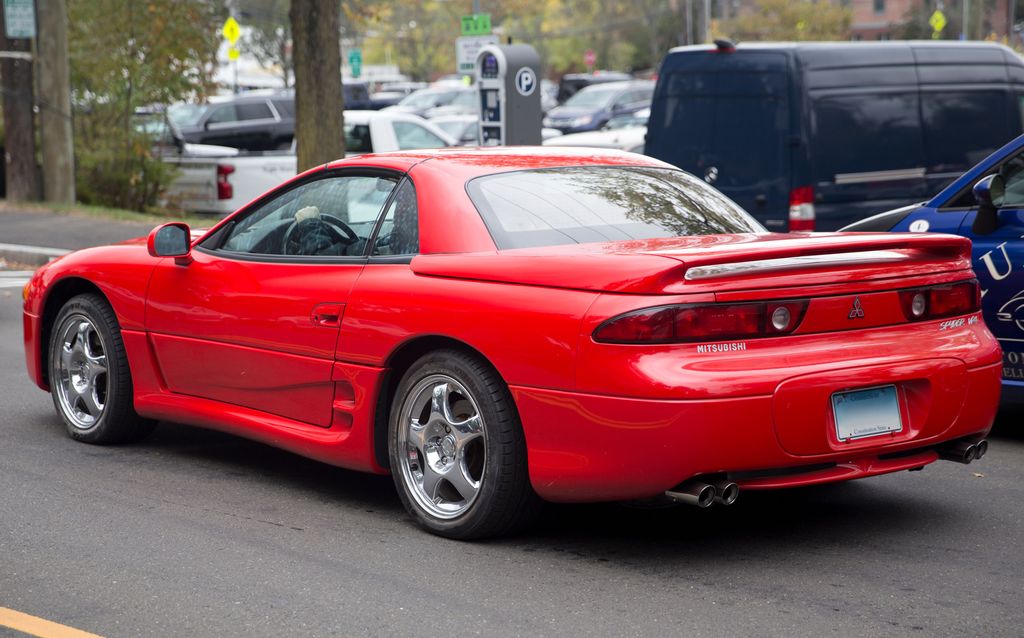
1. **Mitsubishi 3000GT VR-4 Spyder (1994)**While the Mitsubishi 3000GT was a known entity, the VR-4 Spyder variant was, and remains, a bona fide unicorn in the automotive world. With only around 1,800 units ever produced, it offered a truly rare combination: a fully retractable hardtop coupled with Mitsubishi’s formidable all-wheel-drive system and a potent twin-turbo V6 engine. This was a car that packed an astonishing amount of cutting-edge technology into its chassis, pushing the boundaries of what a grand tourer could be.
Admittedly, the VR-4 Spyder carried a significant weight penalty due to its complex folding roof mechanism, which some purists might argue detracted from its ultimate sports car agility. However, to focus solely on that would be to miss the point entirely. In 1994, finding another convertible that offered this level of technological sophistication, all-weather capability, and sheer performance was virtually impossible, making it a true marvel of its time.
Today, a clean example of the 3000GT VR-4 Spyder can be found hovering around the $20,000 mark. This represents incredible value when compared to its contemporary rivals, such as the Toyota Supra, which command significantly higher prices. For the enthusiast who appreciates a blend of advanced engineering, exclusivity, and a potent powertrain in a package that defies easy categorization, the VR-4 Spyder stands as an undeniably tempting proposition.
Car Model Information: 1995 Mitsubishi 3000GT VR-4
Caption: Mitsubishi 3000GT VR-4
Name: Mitsubishi 3000GT (Z15A/Z16A)
Aka: Mitsubishi GTO (Japan),Dodge Stealth
Manufacturer: Mitsubishi Motors
Assembly: Okazaki, Aichi
Production: unbulleted list
Predecessor: Mitsubishi Starion
Class: unbulleted list
ModelCode: unbulleted list
Related: Mitsubishi Diamante
BodyStyle: ubl
Engine: unbulleted list
Transmission: unbulleted list
Wheelbase: 2470 mm
Abbr: on VR-4 Spyder
Length: 4600 mm
Width: 1840 mm
Height: 1285 mm
Weight: {{convert,3131,lb,kg,0,abbr=on
Layout: Transverse engine,front-engine,front-wheel drive
Designer: Masaru Suzuki (1987)
Categories: 2000s cars, All-wheel-drive vehicles, All articles with unsourced statements, Articles with short description, Articles with unsourced statements from September 2025
Summary: The Mitsubishi 3000GT is a front-engine, all-wheel/front-wheel drive grand touring/sports car manufactured and marketed by Mitsubishi from 1990 until 2000 over three different series. Manufactured in a three-door hatchback coupé body style in Nagoya, Japan, the 2+2 four-seaters were marketed in the Japanese domestic market as the GTO, and globally as 3000GT. In North America, it was sold both as the Mitsubishi 3000GT (1991–1999) and the Dodge Stealth (1991–1996), a badge engineered, mechanically identical captive import. As a collaborative effort between Chrysler and Mitsubishi Motors, Chrysler was responsible for the Stealth’s exterior styling.
The car was based on Mitsubishi’s Sigma/Diamante and retained their transverse mounted 3-liter, 24-valve V6 engines and front-wheel-drive layout. The GTO’s engines were naturally aspirated or with twin-turbochargers and were also available with active aerodynamics (automatically adjusting front and rear spoilers), four-wheel-steering, full-time all-wheel-drive and adaptive suspension.
Mitsubishi marketed a retractable hardtop variant, which were engineered and converted from coupé models in California by ASC, and sold as the GT Spyder or VR4 Spyder for model years 1993–1995. These were the first fully automated retractable hardtop marketed since the 1959 Ford Skyliner.
The JDM model took its name from the Galant GTO, a two-door hardtop coupé marketed by the company in the early 1970s, which in turn took its name from the Ferrari 250 GTO, short for Gran Turismo Omologata – “Omologata” signifying that it met motorsport homologation requirements.
Get more information about: Mitsubishi 3000GT
Buying a high-performing used car >>>
Brand: Mitsubishi Model: 3000GT
Price: $39,800 Mileage: 45,835 mi.

2. **Isuzu VehiCROSS (1997-2001)**The Isuzu VehiCROSS looked like it had driven straight out of a science fiction movie, utterly unlike anything else on the road in the late 90s. Its distinctive, almost aggressive styling, characterized by heavy black cladding, a bold stance, and a highly unconventional aesthetic, made it an instant head-turner. This wasn’t just a design exercise; it was a testament to Isuzu’s willingness to push visual boundaries in a segment often dominated by conservative designs.
Beyond its striking appearance, the VehiCROSS was a genuinely capable off-roader, equipped with a sophisticated torque-on-demand 4WD system. It was, in many respects, a trailblazer, anticipating the modern crossover segment years before it truly took hold. Isuzu’s production numbers for this eccentric SUV were incredibly limited, with only 5,958 units built worldwide, cementing its status as a cult favorite among those in the know.
The irony of the VehiCROSS’s journey is palpable: originally based on the more conventional Isuzu Trooper, it is now far more sought-after and collectible than its more pedestrian progenitor. Its blend of avant-garde design, genuine off-road credentials, and sheer rarity makes it a truly unique piece of 90s automotive history. For collectors seeking an oddball with undeniable character and capability, the VehiCROSS offers a compelling narrative.

3. **Nissan Pulsar GTI-R (1990-1994)**Affectionately dubbed “Godzilla’s little brother,” the Nissan Pulsar GTI-R was a pocket rocket built with a singular purpose: to dominate rally stages. This compact hot hatch packed a serious punch, featuring a 227-horsepower turbocharged engine paired with Nissan’s legendary all-wheel-drive system. It was a raw, unadulterated performance machine, designed for enthusiasts who prioritized aggressive capability over refinement.
However, its uncompromising, almost brutal, rally-bred character proved to be a double-edged sword. The very attributes that made it a formidable competitor on dirt tracks also made it perhaps too intense and unrefined for the tastes of mainstream buyers at the time. It was a car that demanded to be driven with intent, offering a visceral feedback loop that few of its contemporaries could match.
Today, surviving examples of the Pulsar GTI-R are exceptionally rare, especially outside its native Japan. If you are fortunate enough to locate a clean, well-maintained specimen, expect to pay upwards of $30,000, a price that reflects its cult status, historical significance in rally racing, and dwindling numbers. For those who yearn for a truly analogue, high-performance hot hatch from the 90s, the GTI-R is an undisputed heavyweight.
Car Model Information: 2023 Dodge Charger GT
Caption: 2014 Nissan Pulsar (C13)
Manufacturer: Nissan
Production: 1978–2005,2014–2018,2016–present (China)
Class: Subcompact car
Predecessor: Nissan Cherry
Successor: Nissan Bluebird Sylphy,Nissan Tiida
Categories: 1980s cars, 1990s cars, 2000s cars, 2010s cars, All articles with unsourced statements
Summary: The Nissan Pulsar (Japanese: 日産・パルサー, Hepburn: Nissan Parusā) is a line of automobiles produced by the Japanese automaker Nissan from 1978 until 2000, when it was replaced by the Nissan Bluebird Sylphy in the Japanese market.
Between 2000 and 2005, the name “Pulsar” has been used in Australia and New Zealand on rebadged versions of the Sylphy. This arrangement continued until the introduction of the Nissan Tiida (C11) in 2005; at this time the Pulsar name was retired. In 2013, Nissan replaced the Tiida in Australia and New Zealand with two new models badged as Pulsar. These were based on the Sylphy (B17) sedan and Tiida (C12) hatchback, the latter also sold in Thailand under the Pulsar name. In 2014, a European-only replacement for the Tiida was introduced using the Pulsar nameplate.
The original Pulsar was a hatchback to be sold exclusively at a different Nissan Japan dealership network called Nissan Cherry Store as a larger five-door hatchback alternative to the Nissan Cherry. Although Pulsar models were front-wheel drive from introduction, Nissan did offer four-wheel drive as an option on select models internationally.
The Pulsar sold in Japan originally served as the intermediate model offered at Nissan dealerships Nissan Cherry Store between the Nissan Violet and the Cherry, while different versions of the Pulsar sold at other Japanese networks served as the base model, with other larger Nissan products. Various Pulsar-based models were exported as international market conditions dictated, sometimes labeled as “Sunny”, “Cherry” or “Sentra”, while the internationally labeled product was actually a Pulsar and not a Japanese market Sunny or Cherry.
The name “Pulsar” is taken from pulsar (portmanteau of pulsating star), a highly magnetized, rotating neutron star.
Get more information about: Nissan Pulsar
Buying a high-performing used car >>>
Brand: Nissan Model: Pulsar GTI-R
Price: $26,690 Mileage: 19,257 mi.

4. **Infiniti Q45 (1990-1996)**Infiniti’s very first flagship sedan, the Q45, was a car ahead of its time, a bold statement intended to challenge the established luxury hierarchy. It boasted an impressive 278-horsepower V8 engine, routed through a rear-wheel-drive platform, and featured advanced technology like active suspension. By all technical accounts, it should have been a resounding success, a formidable competitor in the burgeoning luxury sedan market.
Yet, the Q45 largely flopped in sales, struggling to gain traction against the behemoth that was Lexus’s LS400. This struggle can largely be attributed to a combination of factors, including its polarizing, grille-less styling that didn’t resonate with conservative luxury buyers, and a somewhat vague marketing strategy that failed to clearly define its identity. It was a car that didn’t quite fit neatly into the preconceived notions of luxury at the time.
Fast forward to today, and the Infiniti Q45 stands as an incredible bargain for enthusiasts seeking a slice of early 90s luxury and performance. Pristine examples can still be acquired for under $10,000, offering a significant amount of V8 power, rear-wheel-drive dynamics, and sophisticated comfort for a fraction of the price of its rivals. It’s a compelling, understated luxury sleeper waiting to be rediscovered by those with an appreciation for its unconventional charms.
Car Model Information: 2003 INFINITI Q45 Luxury
Name: Infiniti Q45
Caption: Infiniti Q45 (Y33) in the USA
Manufacturer: Nissan
Production: August 1989 – 2006
Assembly: Kaminokawa, Tochigi
Class: Full-size,luxury car
BodyStyle: sedan (car)
Layout: Front-engine, rear-wheel-drive
Related: Nissan President
Successor: Infiniti Q70
Categories: 1990s cars, 2000s cars, Articles with short description, CS1 Japanese-language sources (ja), Cars discontinued in 2006
Summary: The Infiniti Q45 is a full-size, rear-drive, five-passenger luxury sedan (F-segment in Europe) marketed as the Core product of Infiniti, Nissan’s luxury division — across three generations spanning model years 1989-2006.
The first generation Q45 (1989–1999) was based on the Nissan President; the second (1997–2000) and third (2002–2006) generations were rebadged variants of Nissan’s Japanese Domestic Market Nissan Cima. Infiniti discontinued the Q45 after the 2006 model year.
Get more information about: Infiniti Q45
Buying a high-performing used car >>>
Brand: Infiniti Model: Q45
Price: $13,994 Mileage: 76,815 mi.
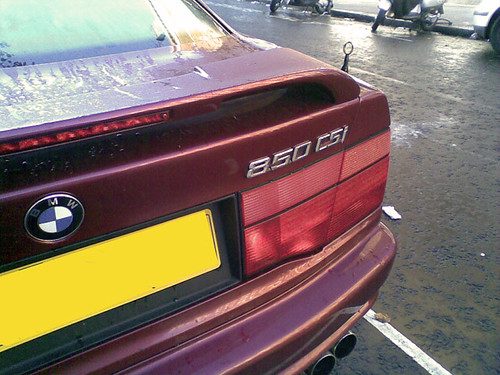
5. **BMW 850CSi (1992-1996)**The BMW 8 Series was always an exclusive, aspirational machine, a grand tourer that blended luxury with performance. However, the 850CSi transcended even that elevated status, positioning itself as the pinnacle of the range and a truly next-level automotive achievement. This was a car that blurred the lines between a high-performance GT and a genuine supercar, embodying the ultimate expression of BMW’s engineering prowess.
Underneath its sleek, aerodynamic bodywork resided a magnificent 375-horsepower V12 engine, an orchestral powerhouse that delivered exhilarating performance. Crucially, this immense power was paired with a six-speed manual transmission, a rarity for such a large, luxurious coupe and a feature that cemented its appeal among serious driving enthusiasts. It offered a connection to the machine that few other cars of its caliber could match.
With only 1,510 units ever produced, the 850CSi’s scarcity is a significant part of its allure. Prices for these automotive masterpieces have been steadily climbing, and astute collectors view a $50,000 investment today as one that could potentially double in value in the coming years. For those who appreciate rare European performance and a truly engaging driving experience wrapped in timeless Bavarian design, the 850CSi is an irresistible proposition.

6. **Subaru SVX (1991-1996)**The Subaru SVX was undeniably one of the more peculiar and wonderful grand tourers of the 1990s, a car that perfectly encapsulated Subaru’s willingness to experiment with unconventional design and engineering. Its most distinctive feature was undoubtedly the Giorgetto Giugiaro-designed “window-within-a-window” layout, an innovative and futuristic styling cue that continues to turn heads and provoke conversation decades later.
Under the hood, the SVX housed a potent 3.3-liter flat-six boxer engine, generating a healthy 230 horsepower, which, combined with Subaru’s renowned full-time all-wheel-drive system, provided a smooth, planted, and remarkably capable ride. This was a car built for long-distance cruising, offering confident handling and a unique power delivery that set it apart from its rivals. The cabin further emphasized its upscale aspirations, wrapped in luxurious leather and suede, creating a genuinely premium feel.
However, the SVX was hampered by its automatic-only transmission, which, while smooth, limited its appeal to performance enthusiasts accustomed to manual gearboxes. A steep price tag also contributed to its struggles in the marketplace, causing it to fade from public consciousness relatively quickly. Today, it stands as a captivating retro-futuristic collectible, with fewer than 10,000 of the original 24,379 units estimated to remain, making it a rare and intriguing find for those who appreciate its distinctive character.
Car Model Information: 1994 Subaru SVX LSi
Name: Subaru SVX
Manufacturer: Subaru
Aka: Subaru Alcyone SVX
Production: 1991 – December 1996
Assembly: Subaru#Manufacturing facilities,Ōta, Gunma
Designer: Giorgetto Giugiaro
Class: Grand tourer
BodyStyle: coupé
Layout: Front-engine, four-wheel drive layout,Front-engine, front-wheel drive layout
Engine: Subaru six-cylinder engines#EG33,flat-six engine
Transmission: List of Subaru transmissions#4EAT,automatic transmission
Wheelbase: cvt
Length: cvt
Width: cvt
Height: cvt
Weight: cvt
Predecessor: Subaru XT
Categories: All-wheel-drive vehicles, All articles needing additional references, All articles that may contain original research, All articles with unsourced statements, Articles needing additional references from February 2019
Summary: The Subaru SVX, marketed in the Japanese home market as the Subaru Alcyone SVX, is a two-door, front-engine, all- or front-wheel drive coupé manufactured and marketed by Subaru from 1991 to 1996 over a single generation.
Superseding the company’s aviation-influenced XT range, the SVX was Subaru’s first entry into the luxury/performance market, and was noted for its aircraft-inspired ‘window-within-a-window’ side-glass configuration.
The nameplate “Alcyone” (pronounced “al-SIGH-uh-nee”) refers to the brightest star in the Pleiades constellation, stylized in the Subaru company logo. The suffix “SVX” is an acronym for “Subaru Vehicle X”.
Get more information about: Subaru SVX
Buying a high-performing used car >>>
Brand: Subaru Model: SVX
Price: $10,999 Mileage: 142,216 mi.
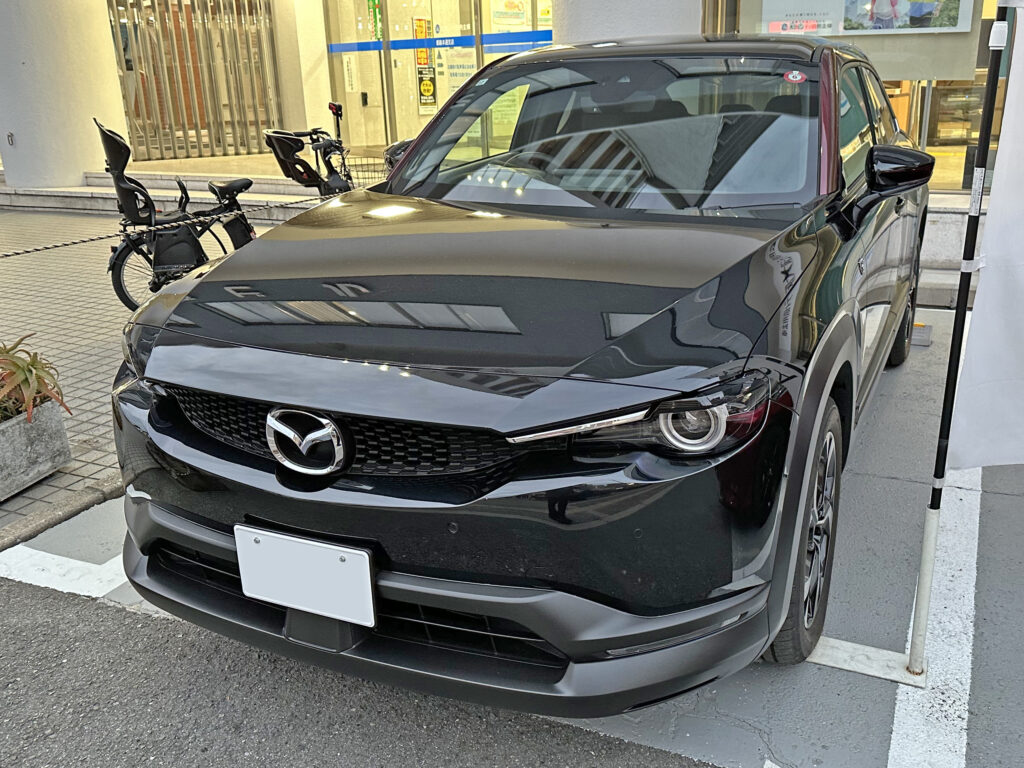
7. **Mazda MX-3 (1991-1998)**The Mazda MX-3 was an unassuming little coupe with a truly remarkable party trick: it housed an insanely tiny 1.8-liter V6 engine, which holds the distinction of being the smallest mass-produced V6 ever. This compact powerplant, capable of revving cleanly past 7,000 rpm, produced around 130 bhp. While not an outright powerhouse in terms of raw numbers, its lightweight chassis and nimble handling made it an absolute joy to drive, feeling far livelier than its specifications might suggest.
Its precise five-speed manual gearbox, short wheelbase, and double wishbone front suspension contributed to its playful and tight handling characteristics, allowing drivers to extract maximum enjoyment from its modest power. The cabin, while leaning towards the practical side, offered solid visibility and decent materials, creating an honest and engaging driving environment. It was a sharp, responsive little coupe that delivered a pure driving experience.
Unfortunately, the MX-3 found itself squeezed between Mazda’s wildly popular Miata roadster and the more potent RX-7 sports car, causing it to get somewhat lost in the company’s extensive lineup. Despite its charms, it never quite received the recognition it deserved. Today, the MX-3 remains a quirky, budget-friendly project car, offering enthusiasts a unique, rev-happy 1990s coupe that’s ripe for rediscovery and a second look.
Car Model Information: 2023 Mazda MX-5 Miata Club
Name: MX-3
Aka: Eunos (automobile)
Caption: 1992 MX-3 1.8
Manufacturer: Mazda
Production: 1991–1998
Assembly: Hofu,Japan
Class: Sports car
BodyStyle: coupé
Predecessor: Mazda Étude
Layout: FF layout
ModelCode: List of Mazda model codes#Model codes
Engine: Liter,Mazda B engine#B5-ZE,Straight-4,DOHC
Transmission: Mazda G5M transmission,manual transmission
Wheelbase: 2455 mm
Abbr: on
Length: 4208 mm
Width: 1695 mm
Height: 52.0 in
Disp: flip
Weight: 1095 kg
Related: Mazda Familia
Designer: Takeshi Arakawa (1988)
Categories: All articles with unsourced statements, Articles with short description, Articles with unsourced statements from August 2017, CS1 French-language sources (fr), CS1 German-language sources (de)
Summary: The Mazda MX-3 is a 2+2-seat, front-wheel drive coupé of a kammback design, manufactured and marketed by Mazda. It was introduced at the Geneva Auto Show in March 1991 and marketed until 1998.
The MX-3 was also marketed as the Mazda MX-3 Precidia in Canada and as the Eunos Presso, Autozam AZ-3 and Mazda AZ-3 in Japan. In Australia it was marketed as the Eunos 30X until late 1996 when it became the Mazda-Eunos 30X.
Get more information about: Mazda MX-3
Buying a high-performing used car >>>
Brand: Mazda Model: MX-3
Price: $25,996 Mileage: 32,837 mi.
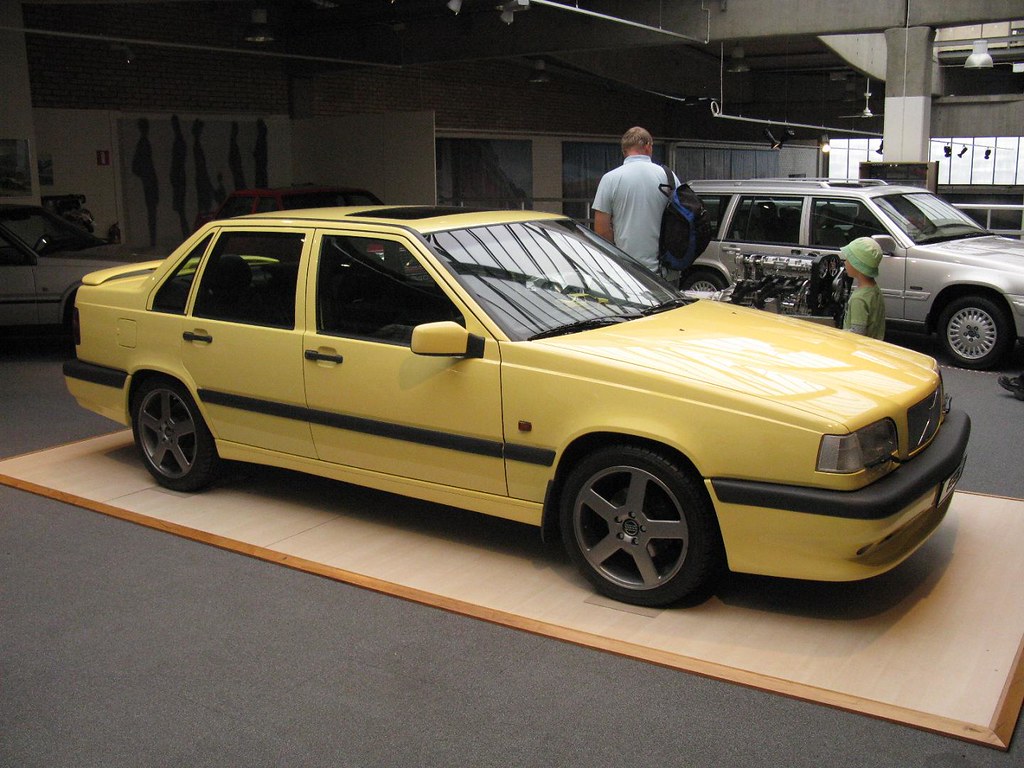
8. **Volvo 850 T-5R (1994-1995)**Volvo, a brand typically associated with safety and sensible design, took a daring detour with the 850 T-5R, creating one of the most unlikely sleeper wagons of the 1990s. This was no ordinary family hauler; developed with significant input from Porsche, it was a beast disguised in a utilitarian body. It packed a turbocharged 2.3-liter five-cylinder engine under its hood, unleashing a formidable 240 horsepower, a truly impressive figure for an estate car of its era.
This potent combination of power and practicality made the 850 T-5R one of the fastest estate cars of its time, capable of reaching a top speed of 155 mph. Its surprising performance capabilities, coupled with its understated appearance, quickly earned it cult status. Further cementing its legend was its unexpected success in the British Touring Car Championship (BTCC), where the sight of a boxy Volvo wagon battling purpose-built race cars became an iconic image of 90s motorsport.
Only 5,500 units of the 850 T-5R were produced worldwide, and precious few remain in good, original condition, making it a genuinely rare find. For those who appreciate the thrill of a performance car that flies under the radar, offering blistering speed and excellent handling without drawing unwanted attention, the Volvo 850 T-5R is a compelling, historically significant piece of Swedish engineering that richly deserves more recognition.
Car Model Information: 2023 Dodge Charger GT
Name: Volvo 850
Caption: 1994 Volvo 850 saloon
Manufacturer: Volvo Cars
Production: 1991–1997 (716,903 units)
ModelYears: 1992–1997
Assembly: Torslanda
Predecessor: Volvo 200 Series
Successor: Volvo S70
Class: Compact executive car
BodyStyle: sedan (car),language=en,url=https://www.volvocars.com/intl/about/our-company/heritage/heritage-models/55-850-sedan,title=Volvo 850 Sedan,publisher=Volvo Car Corporation,website=www.volvocars.com,access-date=2018-04-13,url-status=dead,archive-date=2017-11-07,archive-url=https://web.archive.org/web/20171107014254/https://www.volvocars.com/intl/about/our-company/heritage/heritage-models/55-850-sedan
Layout: Front-engine, front-wheel-drive layout,front-wheel drive
Platform: Volvo P80 platform
Engine: Petrol:,Straight-five engine,(93kW–186kW),Diesel:,Straight-five engine,(103kW)
Transmission: ubl
Wheelbase: 2664 mm
Abbr: on
Length: saloon: {{convert,4661,mm,1,abbr=on
Width: 1760 mm
Height: 1991–1997 saloon:,{{convert,1415,mm,1,abbr=on
Weight: saloon:
Designer: Jan Wilsgaard
Sp: uk
Categories: All-wheel-drive vehicles, All articles with unsourced statements, Articles with short description, Articles with unsourced statements from January 2012, CS1 Dutch-language sources (nl)
Summary: The Volvo 850 is a compact executive car that was produced by the Swedish manufacturer Volvo Cars from 1991 until 1997. Designed by Jan Wilsgaard, the car was introduced in a saloon body style; an estate style was introduced in 1993.
The Volvo 850 was shown for the first time in June 1991, and the car marked a departure for Volvo, featuring multiple unprecedented features for the company; these included a transverse 5-cylinder engine driving the front wheels, a Delta-link rear axle, a side impact protection system, and a self-adjusting front seat belt mechanism.
The Volvo 850 was succeeded by the Volvo S70 and Volvo V70.
Get more information about: Volvo 850
Buying a high-performing used car >>>
Brand: Volvo Model: 850 T-5R
Price: $26,690 Mileage: 19,257 mi.
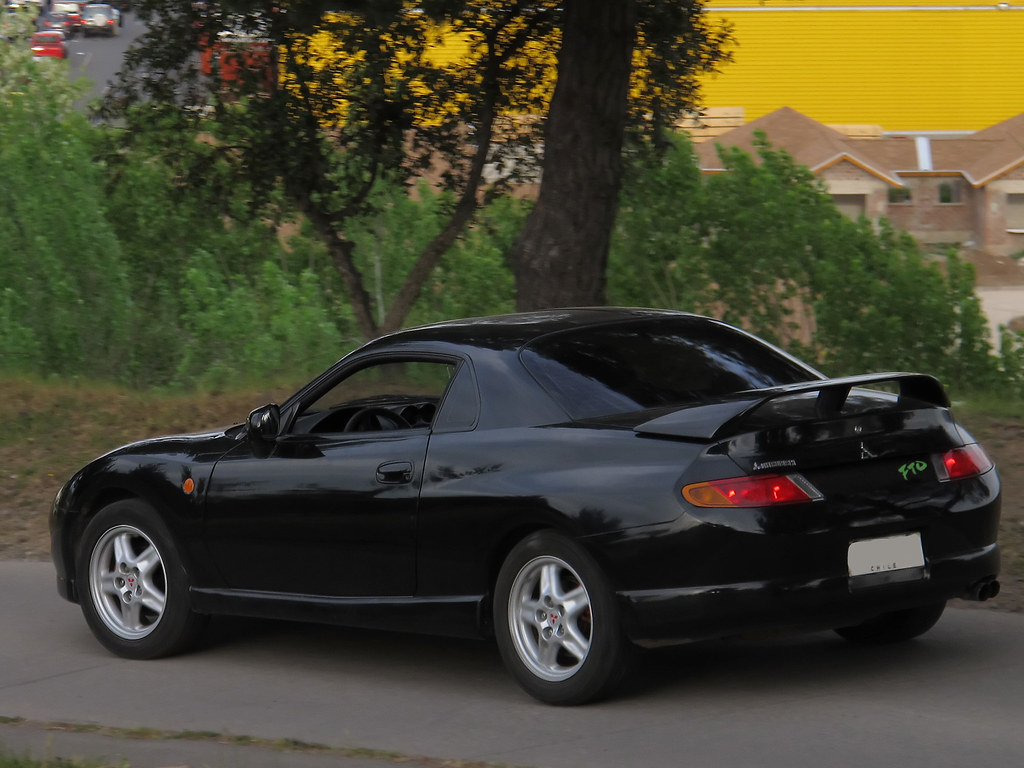
9. **Mitsubishi FTO (1994-2000)**While names like the Lancer Evolution and GTO/3000GT often steal the spotlight, the FTO remains an unsung hero, an engaging front-wheel-drive sports coupe that packed surprising flair and engineering prowess. Designed to offer an accessible, yet thrilling, driving experience, the FTO quickly carved its niche in the Japanese market, even earning Japan’s Car of the Year in 1994. Its sleek lines and sporty demeanor hinted at the spirited performance within.
The heart of the FTO, especially in its desirable GPX variant, was a magnificent 2.0-liter MIVEC V6 engine. This engineering marvel unleashed a thrilling 200 horsepower, delivering a rev-happy and smooth power band. Mated to a precise transmission, the FTO offered a level of driver engagement that defied its front-wheel-drive configuration, proving high-performance didn’t always require an all-wheel-drive system. It was a testament to Mitsubishi’s ability to extract impressive performance from a compact package.
Despite its critical acclaim, the FTO was overshadowed by its more aggressively marketed, all-wheel-drive stablemates. With only around 36,000 units produced and fewer surviving due to export restrictions, finding a clean FTO is challenging. For enthusiasts seeking a distinctive, well-engineered, and genuinely enjoyable Japanese sports coupe from the 90s, the Mitsubishi FTO stands as a compelling, rewarding discovery.
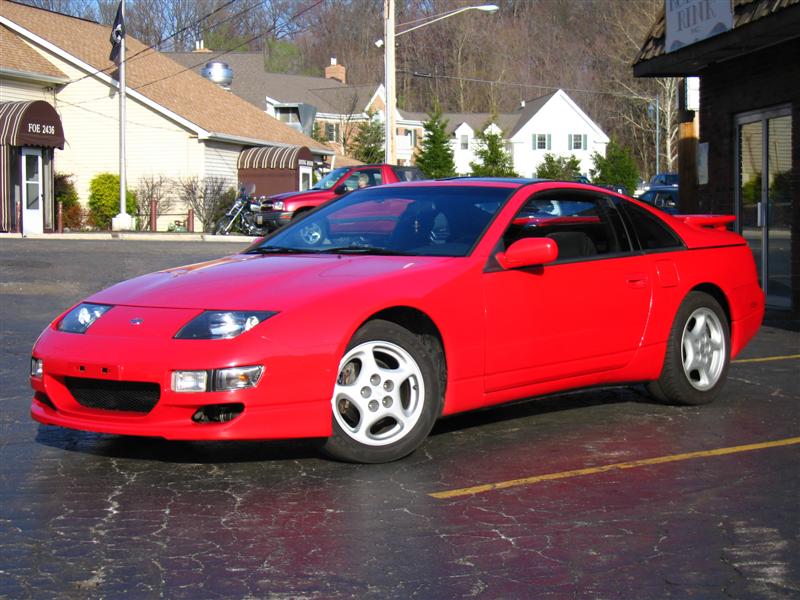
10. **Nissan 300ZX (Z32) (1989-2000)**The Nissan 300ZX, particularly the Z32 generation, stands as a testament to Nissan’s audacious engineering and design capabilities during the 1990s. While it cultivated a strong fanbase in Japan and the United States, it never quite ascended to the same iconic status as the mighty Skyline GT-R. This oversight is a genuine shame, as the 300ZX Twin Turbo was a formidable machine, a true grand tourer capable of matching European supercars of its era.
Powering the top-tier Z32 was a magnificent 3.0-liter twin-turbo V6 engine, a technological tour de force that delivered a robust 300 horsepower. This engine provided exhilarating acceleration and a broad power band, making the 300ZX a thrilling car to drive. Its sophisticated chassis, featuring multi-link suspension and available Super HICAS four-wheel steering, ensured incredibly precise and confidence-inspiring handling dynamics.
Unfortunately, the Z32’s advanced engineering, while brilliant, also introduced complexity and high maintenance costs, limiting its wider market success. This perception, coupled with its relatively understated styling, meant it struggled to capture public imagination. Today, the 300ZX Twin Turbo represents incredible value for enthusiasts seeking a genuinely high-performance, technologically advanced, and often overlooked Japanese classic.
Car Model Information: 1990 Nissan 300ZX GS
Name: Nissan 300ZX
Class: Grand Tourer
Manufacturer: Nissan
Production: 1983–2000
Assembly: ubl
Aka: Nissan Fairlady Z
Layout: Front-engine, rear-wheel-drive layout
Predecessor: Nissan Fairlady Z (S130)
Successor: Nissan 350Z
Categories: 1990s cars, 2+2 coupés, All articles needing additional references, All articles with unsourced statements, Articles needing additional references from May 2021
Summary: The Nissan 300ZX is a sports car that was produced across two different generations. As with all other versions of the Z, the 300ZX was sold within the Japanese domestic market under the name Fairlady Z.
It was sold in Japan from 1983 to 2000 and in the United States from 1984 to 1996, the 300ZX name followed the numerical convention initiated with the original Z car, the Nissan Fairlady Z (S30), which was marketed in the U.S. as the 240Z. The addition of the “X” to the car’s name was a carryover from its predecessor, the 280ZX, to signify the presence of more luxury and comfort oriented features. The first generation 300ZX known as the Z31 model was produced from 1983 through 1989 and was a sales success becoming the highest volume Z-car for Nissan.
To become even more competitive in the sports car market, the second generation 300ZX was driven up-market. It was redesigned to be faster and to feature more advanced technology, but came with a higher price than its predecessor, with consecutive price increases each model year of availability. As such, sales dwindled each year, a trend in the higher end sports car market at the time, and Nissan placed a hiatus on selling new Nissan Z-Cars to the US after the 1996 model year, though the car would continue to be sold in the Japan domestic market until 2001 in low production numbers.
Car and Driver placed the Z32 on its Ten Best list for seven consecutive years, each model year of its availability in the United States. Motor Trend awarded it as the 1990 Import Car of the Year. The Nissan 350Z, officially the Z33 generation Z-Car, succeeded the 300ZX in 2003.
Get more information about: Nissan 300ZX
Buying a high-performing used car >>>
Brand: Nissan Model: 300ZX
Price: $24,597 Mileage: 21,680 mi.
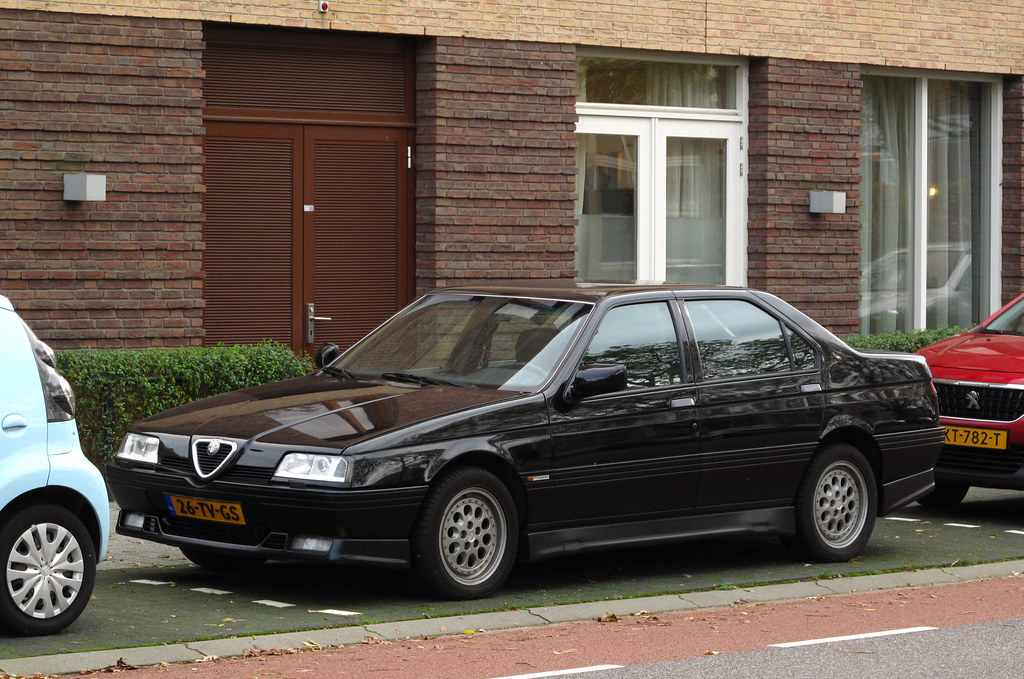
11. **Alfa Romeo 164 Q4 (1993-1997)**When considering 1990s Alfa Romeo, the 164 Q4 represents a truly rare and sophisticated chapter in the marque’s history. This executive saloon, while sharing platform origins with contemporaries like the Saab 9000, distinguished itself dramatically with its breathtaking Pininfarina-designed bodywork – a masterclass in elegant, aerodynamic styling that still captivates observers. It was a vehicle that simply exuded Italian flair, a stunning fusion of art and automotive engineering.
Beneath that striking exterior lay an equally impressive powertrain: a glorious 3.0-liter “Busso” V6 engine, famously inspired by Ferrari, delivering a robust 232 horsepower. This orchestral V6, renowned for its incredible sound and smooth power delivery, was paired with a sophisticated, permanent all-wheel-drive system known as Viscomatic. This clever system ensured exceptional traction and fantastic handling dynamics, allowing the Q4 to confidently tackle varied road conditions.
However, the 164 Q4 faced an uphill battle. Alfa Romeo’s historical reputation for reliability unfortunately overshadowed its remarkable engineering, preventing it from achieving the popularity of its German rivals. With a minuscule production run of approximately 1,000 units, the 164 Q4 remains an exceptionally rare sight. For the discerning enthusiast who cherishes Italian automotive artistry, a sensational V6, and a genuinely engaging, all-weather driving experience, this Alfa Romeo is an almost mythical hidden gem.
Car Model Information: 2017 Chevrolet Corvette Stingray
Name: Alfa Romeo 164
Alt: A four-door three-box car with door mirrors on both sides, integrated headlamps, front fog lamps, and dual-tone paint
Manufacturer: Alfa Romeo,FCA Italy,aka = Alfa Romeo 168
Production: 1987–1998
Assembly: Alfa Romeo Arese Plant,Lombardy
Predecessor: Alfa Romeo 90,Alfa Romeo Alfa 6,Alfa Romeo 2300
Successor: Alfa Romeo 166
Class: Executive car
BodyStyle: Sedan (car)
Layout: Front-engine, front-wheel-drive layout
Platform: Type Four platform
Engine: ubl
Transmission: manual transmission,Getrag,ZF 4HP18 transmission,ZF 4HP18 transmission
Wheelbase: 2660 mm
Abbr: on (1993–95)
Length: {{convert,4554,mm,in,1,abbr=on
Width: 1760 mm
Height: {{convert,1390,mm,in,1,abbr=on
Weight: convert
Related: Unbulleted list
Designer: Enrico Fumia
Sp: uk
Aka: Alfa Romeo 168 (Taiwan, Hong Kong, and Malaysia)
Categories: 1990s cars, Alfa Romeo vehicles, All-wheel-drive vehicles, All articles with unsourced statements, Articles with short description
Summary: The Alfa Romeo 164 (Type 164) is a four-door executive saloon manufactured and marketed by Italian automaker Alfa Romeo from 1987 to 1998, styled by Pininfarina, and cooperatively designed and sharing platforms and numerous elements with the Fiat Croma, Saab 9000 and Lancia Thema.
The 164 succeeded the Alfa Romeo 90 and Alfa 6. The 164 was followed by the 166 in 1998, after a combined production total of 273,857 units.
The 164 was also the last Alfa Romeo officially sold in the United States until the 2015 launch of the Alfa Romeo Giulia. Alfa Romeo withdrew after the 1995 model year due to reliability concerns and slow sales.
Get more information about: Alfa Romeo 164
Buying a high-performing used car >>>
Brand: Alfa Romeo Model: 164 Q4
Price: $43,242 Mileage: 30,380 mi.

12. **Ford Puma (1997-2002)**In an era dominated by hot hatches and complex sports cars, the Ford Puma emerged as a refreshing anomaly: an affordable, lightweight coupe that prioritized pure driving enjoyment above all else. Built upon the humble Ford Fiesta platform, the Puma shed any pretense of luxury or excess, instead focusing on delivering an incredibly agile and communicative driving experience that felt far more premium than its price tag suggested. Its playful, yet purposeful, styling hinted at the spirited performance it offered.
The magic truly happened under the hood, where a brilliant 1.7-liter Yamaha-developed Zetec engine resided. Though its peak output of 123 horsepower might seem modest, this highly responsive inline-four punched well above its weight, eager to rev and delivering surprising shove thanks to the Puma’s featherlight chassis. It was the perfect match for the car’s razor-sharp steering and finely tuned suspension, allowing drivers to attack corners with confidence typically reserved for much more expensive sports cars.
Despite its critical acclaim, the Ford Puma never quite received the widespread recognition it deserved. Perhaps it was too niche or overshadowed by more powerful rivals. Today, with around 133,000 units produced but many lost to time, surviving examples are increasingly sought-after. It remains a fantastic choice for enthusiasts seeking a genuinely fun, accessible, and often overlooked performance car from the late 90s, a true testament to Ford’s European performance heritage.
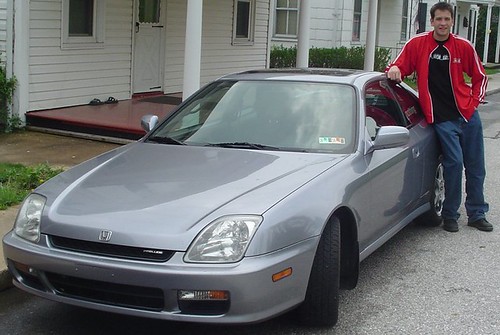
13. **Honda Prelude Type SH (1996-2001)**The Honda Prelude has long been a stalwart of the Japanese coupe scene, but the fifth-generation Type SH variant from 1996-2001 truly elevated its game, offering an unparalleled front-wheel-drive driving experience that often goes unnoticed. While its Integra Type R sibling garnered most cult status and headlines, the Prelude Type SH was, in many respects, a more sophisticated and equally capable machine, delivering a blend of performance and technological innovation.
The real engineering marvel of the Type SH was its Active Torque Transfer System (ATTS), a groundbreaking technology for a front-wheel-drive car. This intelligent system proactively distributed torque between the front wheels, effectively mitigating understeer and dramatically improving cornering grip and agility. Combined with Honda’s renowned 2.2-liter VTEC engine, which eagerly spun up to its redline to deliver a strong 200 horsepower, the Prelude Type SH offered a truly exhilarating and incredibly precise driving dynamic.
Despite its advanced capabilities and fantastic driving dynamics, the Prelude Type SH never quite achieved the same legendary status or fervent following as other high-performance Honda models. With over 58,000 units produced globally, clean, well-maintained examples are now becoming increasingly rare. For enthusiasts seeking a technologically advanced, incredibly rewarding, and genuinely underrated front-wheel-drive performance coupe from the 90s, the Honda Prelude Type SH represents a brilliant and historically significant choice.
Car Model Information: 2000 Honda Prelude
Name: Honda Prelude
Caption: 1998 Honda Prelude VTi (BB6) in the UK
Manufacturer: Honda
Production: November 1978 – October 2001,2025–present
Class: Sport compact car
Layout: Front-engine, front-wheel-drive
BodyStyle: liftback,coupe
Assembly: Sayama, Saitama
Predecessor: Honda 1300#Honda 145
Categories: 1980s cars, 1990s cars, 2020s cars, All articles lacking reliable references, All articles needing additional references
Summary: The Honda Prelude (Japanese: ホンダ・プレリュード, Hepburn: Honda Pureryūdo) is a sport compact car produced by the Japanese company Honda. It was produced over five generations from 1978 to 2001, and reintroduced in 2025.
For the first five generations, as a two-door coupe loosely derived from the Accord, the Prelude was the first Honda to feature a moonroof, a feature that remained standard equipment throughout its production.
The Prelude was used by Honda to introduce the Japanese Honda retail sales chain Honda Verno, with the international release of the model following shortly after. The Prelude’s manufacture concluded in 2001 on introduction of the fourth-generation Integra. The Prelude name was originally trademarked by Toyota, but was amicably given to Honda for use.
The Prelude’s nameplate aligned with a series of music-themed nameplates in use by Honda, including the Accord, Quintet, Concerto, Jazz, and Ballade.
Get more information about: Honda Prelude
Buying a high-performing used car >>>
Brand: Honda Model: Prelude
Price: $6,999 Mileage: 233,307 mi.

14. **Nissan NX2000 (1991)**Nestled quietly within Nissan’s early 90s lineup, the NX2000 was undeniably one of the brand’s better-kept secrets, a pocket rocket that delivered far more driving excitement than its unassuming exterior suggested. While many enthusiasts lauded the Sentra SE-R for its performance, the NX2000 shared all of its vital organs – including the revered 140-horsepower SR20DE engine – but wrapped them in a lighter, more compact, and arguably more agile hatchback body. This was a car built for drivers who understood that true performance isn’t always about outright power, but rather the harmonious balance of components.
What truly set the NX2000 apart in its class was the standard-fit limited-slip differential, a feature almost unheard of in budget-friendly performance coupes of the era. This crucial addition, combined with its lightweight construction and tightly tuned suspension, contributed to an exceptionally nimble and responsive chassis. The car delivered genuine driving feedback through its steering wheel and pedals, communicating every nuance of the road to the driver. It was quick enough for spirited driving and possessed a playful character that encouraged enthusiastic cornering.
While the interior was functional rather than flashy, it provided everything a driver needed: well-bolstered seats, clear instrumentation, and an ergonomic layout. The NX2000 was never a sales chart topper, overshadowed by more mainstream siblings. However, for those in the know, who craved an honest, budget-friendly performance machine with a manual gearbox and real driving purity, this little coupe ticked every box. It remains an underrated gem waiting for a passionate rediscovery.
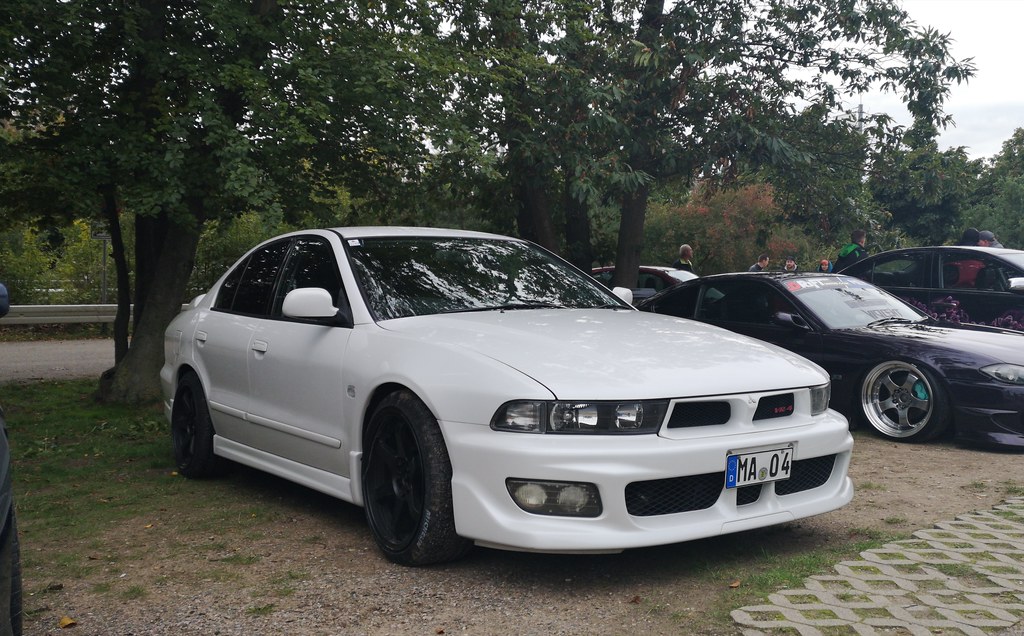
15. **Mitsubishi Galant VR-4 (1994)**Before the Lancer Evolution became the undisputed king of rally-bred sedans for Mitsubishi, there was the Galant VR-4, a formidable all-wheel-drive sport sedan that laid much of the groundwork for its successor’s legendary status. This was Mitsubishi’s sophisticated answer to the burgeoning performance sedan market of the 1990s, borrowing heavily from its rally-spec heritage to create a car that was far more capable and technologically advanced than most people ever realized. It was a true wolf in sheep’s clothing.
Under the hood of the Galant VR-4 resided a potent 2.0-liter turbocharged inline-four engine, mated exclusively to a five-speed manual transmission. While officially rated at 237 horsepower, many enthusiasts suspected this figure was conservatively underrated, as the car delivered explosive acceleration and robust torque. Crucially, this power was channeled through a sophisticated full-time all-wheel-drive system, providing immense traction and unflappable stability, allowing the VR-4 to launch with incredible ferocity.
Beyond its impressive powertrain, the Galant VR-4 also boasted a solid ride and innovative features such as four-wheel steering in some markets, which further enhanced its handling. The interior was driver-focused, featuring supportive bucket seats and a purposeful cockpit. Sadly, it was often overshadowed by the more flamboyant Eclipse and the growing DSM tuning scene. Today, the Galant VR-4 stands as a genuinely capable and historically significant sedan, offering a unique blend of rally heritage and understated performance.
Car Model Information: 2017 Chevrolet Corvette Stingray
Caption: Tokyo Motor Show
Name: Mitsubishi Galant VR-4
Production: 1987–2002
Assembly: Flagicon,Mitsubishi Motors#Locations,Okazaki, Aichi
BodyStyle: sedan (car)
Platform: Mitsubishi Galant
Layout: Front-engine, four-wheel-drive layout,four-wheel drive
Length: 456cm-466cm
Engine: straight-4,turbocharger
Transmission: Four-wheel drive
Successor: Mitsubishi Lancer Evolution
Related: Mitsubishi Galant
Class: Sports Car
Categories: 1980s cars, 1990s cars, 2000s cars, All-wheel-drive vehicles, All articles with unsourced statements
Summary: The Mitsubishi Galant VR-4 (Viscous Realtime 4WD) was the range-topping version of Mitsubishi Motors’ Galant model, available in the sixth (1987–1992), seventh (1992–1996) and eighth (1996–2002) generations of the vehicle. Originally introduced to comply with the new Group A regulations of the World Rally Championship, it was soon superseded as Mitsubishi’s competition vehicle by the Lancer Evolution, and subsequently developed into a high-performance showcase of the company’s technology.
Get more information about: Mitsubishi Galant VR-4
Buying a high-performing used car >>>
Brand: Mitsubishi Model: Galant VR-4
Price: $43,242 Mileage: 30,380 mi.
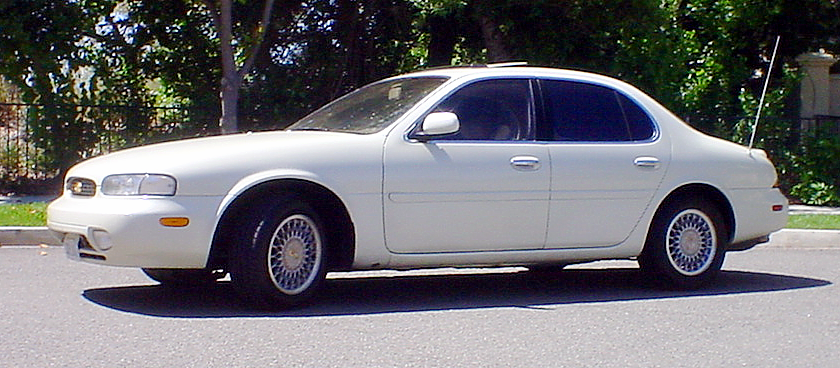
16. **Infiniti J30 (1997)**The Infiniti J30 is perhaps one of the more enigmatic entries on this list, a car that, despite its many inherent qualities, simply failed to find its footing in the competitive luxury sedan market of the mid-to-late 1990s. Its distinctive, rounded body styling, a deliberate departure from the angular designs, combined with its rear-wheel-drive configuration, confused many buyers. Yet, beneath its polarizing exterior lay a surprisingly sophisticated and enjoyable machine that deserved far more attention.
At its core, the J30 boasted a compelling powertrain: the very same 3.0-liter V6 engine found in the legendary Nissan 300ZX, though here it was tuned for smooth, refined power delivery. This engine provided ample motivation, paired with a chassis that offered a remarkably balanced and controlled feel on the road. The J30 handled better than its plush suspension might suggest, cornering with unexpected composure and offering a ride quality that blended comfort with confident road holding.
Step inside, and the J30 revealed a plush, leather-wrapped cabin that, unlike many contemporaries, has aged with surprising grace. The interior exuded an understated luxury, with quality materials and a thoughtful layout. While its rear seat was admittedly a bit cramped, the overall driving experience was one of serene sophistication. The J30 was often overlooked for being “weird,” yet today, it stands as an incredible value proposition for enthusiasts seeking a distinctive, refined, and genuinely comfortable rear-wheel-drive luxury car from the 90s.
**An Enduring Legacy of Unsung Heroes**
Car Model Information: 1996 INFINITI J30
Name: Infiniti J30
ModelCode: Y32
Aka: Nissan Leopard
Manufacturer: Nissan
Class: Executive car
Production: 1992–1997
ModelYears: 1993–1997
BodyStyle: sedan (car)
Engine: Nissan VG engine#VG30DE,V6
Predecessor: Infiniti M30
Successor: Infiniti I30
Wheelbase: 2760 mm
Abbr: on
Order: flip
Length: 191.4 in
Width: 69.7 in
Height: 54.7 in
Weight: 3580 lb
Layout: FR layout
Assembly: Kaminokawa, Tochigi
Transmission: Automatic transmission
Designer: Doug Wilson (1989)
Categories: Articles with short description, CS1 maint: numeric names: authors list, Cars introduced in 1992, Executive cars, Infiniti vehicles
Summary: The Infiniti J30, marketed as the Nissan Leopard J Ferie in Japan, is an executive car. The J30 went into production on April 7, 1992 as a 1993 model to replace the M30 (which was a coupe), and was launched in the United States after its competitors, the Lexus GS and Acura Legend. The car was sold in the mid-size sedan segment between the smaller G20 and the larger Q45, both by size and price. The small interior resulted from its rounded styling uncharacteristic of the crowded executive car class, which is now considered an early variant of a four-door coupé.
Get more information about: Infiniti J30
Buying a high-performing used car >>>
Brand: Infiniti Model: J30
Price: $7,995 Mileage: 50,076 mi.
As we conclude our deep dive into the most underrated foreign classic cars of the 1990s, it becomes abundantly clear that automotive greatness isn’t always defined by record-breaking sales or sky-high auction prices. The decade of the ’90s quietly nurtured a different kind of automotive artistry—a realm of vehicles that dared to be different, pushed engineering boundaries, or simply offered a pure driving experience without the clamor for attention. These aren’t just cars; they’re testaments to innovation, bold design, and a dedication to the visceral joy of driving. For the discerning enthusiast, these hidden gems offer a unique piece of automotive history and an incredibly rewarding opportunity for rediscovery. They are the vehicles that remind us that sometimes, the most extraordinary experiences are found just off the beaten path, waiting to deliver thrills, character, and a connection to the road that truly endures. Their time in the spotlight may have been fleeting, but their legacy as truly special machines is finally, and deservedly, being recognized.



